The best beginner mirrorless camera for 2024: budget stars for new photographers
The best beginner mirrorless cameras you can buy
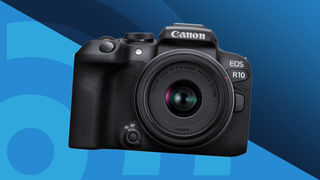
If you’re new to photography, the best entry-level mirrorless cameras are a great choice for beginners. We’ve tested hundreds of cameras and we can confidently say that the best mirrorless options for learners should be easy to use, produce consistently good stills and offer excellent value. Based on those criteria, we’ve pulled together our top picks in the round-up below.
From all those hours of in-depth testing, the beginner mirrorless camera we’d buy is the Canon EOS R10. We love that it handles like a DSLR, while offering modern autofocus and solid burst speeds. We think it’s a really versatile model and the best beginner camera you can buy. But there are others to consider, too.
We’ve designed this guide to help you find the best beginner mirrorless camera for your specific needs and budget, whether you want something cheap and simple, or have a specific skill set in mind, such as video. Each entry has been reviewed extensively in the real world, so you know that our recommendations can be trusted.
Top 3 picks
Use the quick summary below for an instant overview of the best beginner mirrorless cameras. When you find one that fits your needs and budget, you can jump to our full write-up via the link beneath each entry.
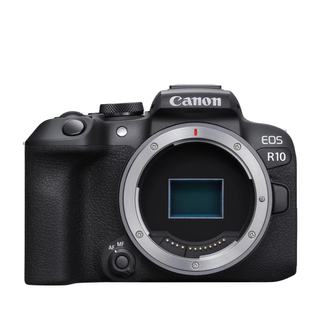
The best beginner mirrorless overall
With good handling and modern autofocus, the EOS R10 is a versatile yet affordable route into Canon’s EOS R system for beginners.
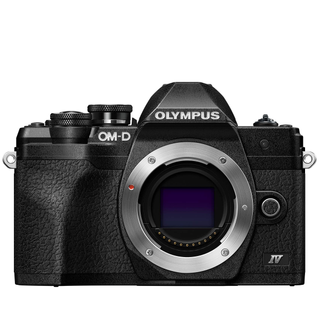
The best budget beginner mirrorless
A 20MP sensor, flip-down touchscreen and impressive image stabilization make this a small but capable stills camera.
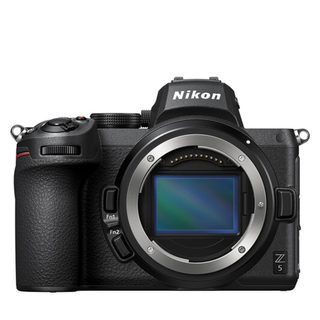
The best premium beginner mirrorless
It’s not cheap, but accessible handling, reliable autofocus and great quality make this the best full-frame option for beginners.
Best by use-case
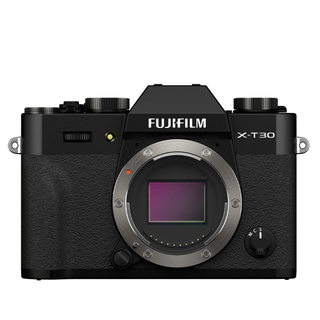
The best everyday beginner mirrorless
Combining a great sensor with cracking AF and nice styling, the X-T30 II is a mid-range model that’s ideal for everyday shooting.
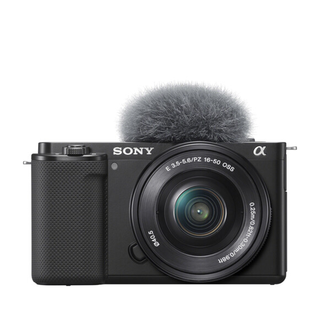
The best for vlogging
A compact yet powerful video tool with an articulating screen, the Sony ZV-E10 makes it easy for beginners to shoot 4K video.
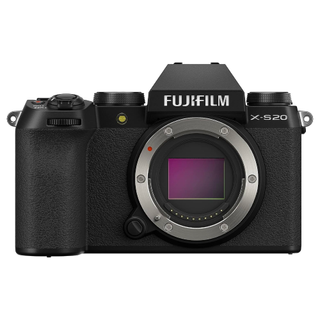
The best hybrid
Offering the shooting power of the X-T4 in a smaller body, the X-S20 is a superb all-rounder that represents decent value for novices.
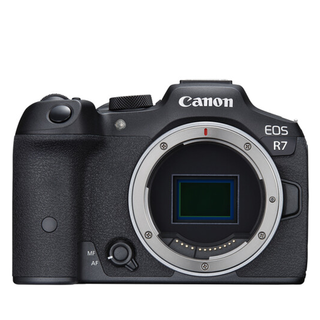
The best for wildlife
With subject-tracking autofocus and fast burst speeds, the EOS R7 is ideal for budding action shooters without a full-frame budget.
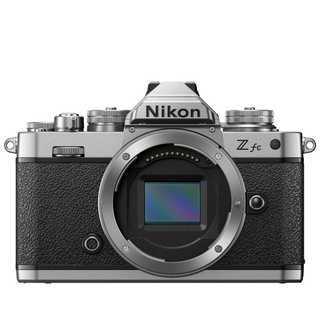
The best retro beginner mirrorless
A fusion of old and new, the Nikon Z fc is a beautiful blend of retro design and mirrorless shooting power at an honest price.
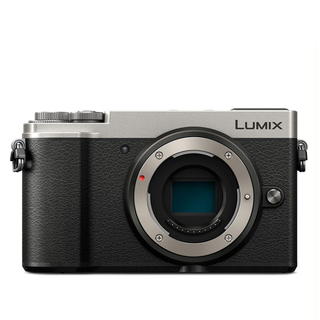
The best cheap beginner mirrorless
It doesn’t grab headlines, but a neat rangefinder design and responsive touchscreen interface make the GX9 a tidy choice.

Tim is TechRadar’s Cameras Editor. He’s worked as a freelance photographer and technology journalist for more than 15 years. In that time, he’s been lucky enough to shoot with a whole range of mirrorless cameras. As a result, he's developed in-depth experience of what makes an excellent mirrorless camera for beginners. Tim notes, “Many beginners will have a limited budget, which is why we've included a number of more affordable mirrorless cameras here. But we think that overall value is important, too. That's why our guide also features well-equipped models with the right features for novices to learn and grow with."
The best beginner mirrorless cameras for 2024
Why you can trust TechRadar
Below you'll find full write-ups for each of the best beginner mirrorless cameras in our list. We've tested each one extensively, so you can be sure that our recommendations can be trusted.
The best beginner mirrorless camera overall





Specifications
Reasons to buy
Reasons to avoid
✅ You're looking for your first camera: The power and usability of the EOS R10's autofocus, plus its superior burst-shooting, put it top of the pile for those starting out.
✅ You need an affordable sports or family camera: While the EOS R10 has mid-range price tag, its burst speeds and autofocus are worth the premium if you're looking to shoot moving subjects.
❌ You need a wide choice of native lenses: Right now, the EOS R10's main weakness is a lack of native lenses.
❌ You'll be mostly shooting video: No headphone jack for monitoring audio, nor any in-body image stabilization to keep things steady. This isn'y a vlogging camera.
Striking a great balance between accessibility and performance, we think the Canon EOS R10 is a fantastic entry-level camera to grow with. Compact yet comfy in the hand, its dual control dials and dedicated AF joystick made it easy to try different techniques in testing. The articulating touchscreen also feels like a natural switch from smartphone shooting. While its 24.2MP sensor isn’t cutting-edge, modern autofocus and Canon’s punchy Digic X processor make it an adaptable camera for learners.
During our review, AF tracking proved impressively reliable for a beginner camera. Burst shooting rates of 15fps also make it a good choice if you want to try action photography. Handheld options are limited after dark by the absence of in-body image stabilization, but the EOS R10 otherwise holds up well against APS-C rivals, producing clean, detailed stills with pleasant colors. Its video skills give it some hybrid versatility, too. While there’s no flat color profile, it can record uncropped 4K/30p footage by oversampling from the sensor’s 6K resolution. All that’s really missing is a wide choice of native lenses, something that will hopefully improve soon.
Read our in-depth Canon EOS R10 review
The best budget beginner mirrorless camera





Specifications
Reasons to buy
Reasons to avoid
✅ You want a small, powerful stills camera: Compact proportions belie the class-leading stills capabilities of the E-M10 Mark IV.
✅ You often shoot handheld: In-body image stabilization gives the Mark IV an edge over rivals, keeping handheld shots sharp.
❌ You record a lot of video: The E-M10 Mark IV can shoot decent footage, but no mic input and a 4K/30p cap limit its blogging potential.
❌ You own the E-M10 Mark III: Upgrades include a new sensor and flip-down screen, but these don’t justify swapping from the Mark III.
It isn't radically cheaper than its Canon EOS R10 and Fujifilm X-T30 II rivals, but the OM-D E-M10 Mark IV is a little more affordable for beginners. And because it has a smaller Four Thirds sensor than those APS-C cameras, it's an even more compact package to shoot with. Videographers should look elsewhere, because it lacks both a microphone port and a USB-C connection. But for budding photographers, it offers a lot: we found its ergonomic grip comfortable in testing, paired with an approachable button layout and handy flip-down touchscreen. We also found it to be the most photo-centric camera at its price point, delivering great stills during our review.
Olympus cameras have long gone big on beginner-friendly software modes, pioneering some of the computational techniques that would later be built on by smartphones. It's the same here, with an 'Advanced Photo' mode that steers novices through techniques like long exposures. The in-body image stabilization system – borrowed from the flagship E-M1 – also proved superb. It might not grab headlines, but the Mark IV is still a great first camera for beginners. That said, if your budget stretches a little further, we also highly recommend the travel-friendly OM System OM-5 as a powerhouse alternative.
Read our in-depth Olympus OM-D E-M10 Mark IV review
The best premium beginner mirrorless camera





Specifications
Reasons to buy
Reasons to avoid
✅ You want to jump straight into full-frame: Whether you’re upgrading from a smartphone or an existing camera, the full-frame sensor Nikon Z5 will elevate your photos.
✅ You’re looking for a lightweight travel camera: With its full-frame sensor and pretty compact proportions, the Nikon Z5 is an excellent travel companion.
❌ You want to shoot action: While the burst rate is comparable to rivals, the Nikon Z5 is hampered by its modest burst shooting speed.
❌ You want to shoot video regularly: If video is a big part of what you’re looking to capture, then the Nikon Z5 isn’t the right camera for you; its 4K video is pretty limited.
This compact full-frame camera is arguably the best entry-level mirrorless camera Nikon has produced to date. It's a full-featured option for beginners or hobbyists, capable of handling a range of subjects without difficulty. In testing we, were impressed by its handling and image quality, as well as its autofocus system, which comes with a fast and intuitive Eye AF for shooting beautiful portraits.
There are high-end features here as well, including a super high-res viewfinder and tough, weather-sealed body. And, while it looks similar to the Z6 and Z7 bodies, it comes with a 24-50mm kit lens that's designed to retract when not in use, making it a great walkaround or travel camera.
Its burst rate of 4.5fps doesn't stack up against some of the competition and its 4K video suffers from a significant crop. Nevertheless, we still highly recommend the Z5 for anyone looking to start their photography journey – or for a really capable all-rounder. In fact, the only reason we've got this Nikon lower down our list is the price tag: it's expensive when compared to some of the other entry-level cameras out there, full frame or otherwise.
Read our in-depth Nikon Z5 review
The best everyday beginner mirrorless camera





Specifications
Reasons to buy
Reasons to avoid
✅ You want a good all-round mid-range camera: Fujifilm makes some of the best mid-range cameras on the market, including the versatile and attractive Fujifilm X-T30 II.
✅ You want a Fujifilm, but your budget is limited: The X-T30 II is not exactly be cheap, but is good value given the specs you’re getting versus the X-S20 and X-T5.
❌ You already have the X-T30: The Mark II is a relatively modest upgrade over the original X-T30, so there’s little point in investing in the newer version.
❌ You’re looking for a vlogging camera: The X-T30 II is designed more for photographers who might shoot the occasional video, rather than serious videographers.
Fujifilm’s original X-T30 was already an excellent everyday camera. Its successor doesn’t dramatically change the recipe. However, we think it does just enough to sweeten the deal. Using an identical chassis to its predecessor, the X-T30 II likewise balances performance with relatively compact proportions. Adopting the same classic retro styling, we felt it was lovely to look at and fantastic to handle. The rear LCD is now sharper, although we still found ourselves wishing for a fully articulating screen, rather than a panel that only tilts.
With the same sensor and 425-point AF system as the original X-T30, we found that the second edition similarly captures bags of detail and beautifully rich tones. A new algorithm more accurately tracks moving targets. It’s not perfect, but it performed pretty well in testing when subjects moved predictably. Focus point sensitivity has also been improved, and we found that the X-T30 II did a solid job picking out fine details in low lighting. If you’re shopping for the best beginner mirrorless camera and you don't already own the X-T30, the Fujifilm X-T30 II is a mid-range all-rounder that’s well worth considering.
Read our in-depth Fujifilm X-T30 II review
The best beginner mirrorless camera for video





Specifications
Reasons to buy
Reasons to avoid
✅ You want a compact interchangeable lens vlogging cam: This is a small 4K vlogging camera with a fully articulating screen and a host of compact lenses to help you get the most out of it.
✅ You want a high-quality streaming camera: With plug-and-play ease, the Sony ZV-E10 is a fine webcam or live-streaming camera.
❌ You need a viewfinder: The Sony A6100 is an alternative for anyone who wants the guts of the Sony ZV-E10 with a built-in electronic viewfinder for framing shots.
❌ You want 4K video capture at 60fps: The Sony ZV-E10’s 4K capture caps out at 25/30 fps, so if you want to slow down your footage without compromising on resolution, you’ll need to look elsewhere.
The Sony ZV-E10 is more than just a gap-filler in Sony's lineup. While it is a logical addition, servicing a need that was previously underserved, it's also a powerful video camera in its own right. Vlogging-focused, it boasts an articulating screen, boosted mics, and a compact body that's portable and easy to handle when you're shooting while moving.
Of course, it takes impressive photos as well. We tested it with a variety of lenses in a varying scenes, and it delivered a rich shot with impressive depth, detail, and contrast without fail. So, it's just as capable as a stills camera, if you're looking to just use one body for all your shooting needs.
It isn’t perfect, mind you. It does sadly produce significant rolling shutter when you're panning and has no 4K capture at 60p (though, to be fair, this isn’t common at the price either). However, its image noise is well-controlled, it delivers three degrees of SteadyShot electronic stabilization, and its autofocus impresses, especially in terms of object-tracking and face recognition.
Read our in-depth Sony ZV-E10 review
The best beginner mirrorless all-rounder





Specifications
Reasons to buy
Reasons to avoid
✅ You want a camera you can grow into: There's plenty of beginner-friendly controls and features, plus image quality will continue to satisfy as your photo skills improve.
✅ You mix up between photo and video: Excellent photos and an almost over the top 6K video spec.
❌ You want class-leading autofocus: Fujifilm’s subject-tracking autofocus is edged out by the likes of the Sony A6600 and Nikon Z50.
❌ You don't shoot a lot of video: Arguably if video isn't your thing, you could save a bunch by opting for the older X-S10 instead.
The X-S20 builds on the already impressive Fujifilm X-S10 – which has the X-T4's 26MP APS-C sensor in a smaller and simpler body – by offering a significantly improved battery life and 6K video chops that is almost overboard for a beginner-level camera. In fact, the X-S20 evolves the range to a more enthusiast-level and feels like a different proposition, and it's pricier for it.
That's not to say beginners are left out – the X-S20 user experience is well suited for newbies, with plenty of auto photography control, a vlogging mode, plus improved subject tracking autofocus. You don't get the retro shooting mode dials like in the XT30 II (see above), but you do get a lovely vari-angle touch screen and chunky grip that makes the X-S20 a lovely everyday camera.
We still get Fujifilm's Film Simulation modes for a variety of looks, and image and video quality is stellar, especially when using one of Fujifilm's excellent X-series lenses. The X-S10 remains on sale despite being updated by the X-S20, and the former remains a compelling choice especially because it's so much cheaper. If you don't need the improved video quality, battery life and refined autofocus, you can save a fair bit by opting for the X-S10.
Read our in-depth Fujifilm X-S20 review
The best beginner mirrorless camera for wildlife





Specifications
Reasons to buy
Reasons to avoid
✅ You're on a budget and like action photography: With excellent subject-tracking and eye-recognition AF, the EOS R7 is a game-changer for Canon enthusiasts shooting action.
✅ You want a small, travel-friendly all-rounder: The EOS R7 with 18-150mm kit lens is a compact package ideal for travelling.
❌ You’re frustrated by the lack of native RF-S lenses: Sports and wildlife shooters are better served by Sony and Fujifilm APS-C systems with superior selection of lenses.
❌ You crave full-frame or low-light excellence: There are lots of advantages to APS-C sensors, but some beginners will simply want to jump in with full-frame camera.
The EOS R7 is a little pricier than its beginner-friendly stablemate, the EOS R10 (see no.1 above). But it also brings a lengthy list of improvements that'll give you more room to grow into, including in-body image stabilization, a better viewfinder, a larger buffer for burst shooting, weather-sealing and uncropped 4K/60p video. If you like to shoot moving subjects or video, it's likely the better choice – as long as you can justify its slightly more mid-range price tag.
While you can't expect full-frame performance from the EOS R7, we found that its smaller APS-C was capable of producing excellent images in a range of conditions. Importantly for beginners and solo filmmakers, its Dual Pixel CMOS AF II autofocus was particularly impressive during our time with the camera: besides intelligent subject tracking, face and eye-detection were capable of locking onto animals rapidly, reliably and with impressive accuracy.
Action shooters will also appreciate its speedy continuous frame rates for capturing action – up to 15fps with the mechanical shutter, or 30fps if you switch to electronic. The only real downside? A lack of native RF-S lenses. Only two are currently available, and safari photographers may find the 18-150mm telephoto doesn’t quite get them close enough.
To save some money on Canon products, check out our Canon discount codes.
Read our in-depth Canon EOS R7 review
The best retro beginner mirrorless camera





Specifications
Reasons to buy
Reasons to avoid
✅ You like looking at your camera: The Nikon Zfc is a retro-chice beauty, whether you are a Nikon fan or not.
✅ You want a mix of old and new: The vari-angle touch screen transforms the Z fc from old to new; tucked away you can pretend there's no screen at all.
❌ You want bullet proof build quality: It may look like the Nikon FM2 analog camera, but the casual Z fc is a different prospect in regards to build quality.
❌ You need a wide choice of lenses: Nikon is yet to fill out the lens range for it's APS-C mirrorless cameras, although there is at least the 24mm f/1.7 prime lens now.
It's a close call between the Nikon Z fc and the Nikon Z50 for a place in this list, but think this gloriously retro model just edges it. Both cameras are based on the same photographic engine and fans of DSLR-style deep grips will likely prefer the Z50, but we found the Z fc's style and useful dials to be better for beginners who have just picked up the hobby or are just starting to expand their photography skills.
The Z fc is a fine all-rounder thanks to its 20.9MP APS-C sensor and hybrid autofocus system. It can also shoot 4K/30p video and has a vari-angle touchscreen to help you shoot from different angles, including front-on to the camera. The only real downsides we found are a lack of weather-sealing and relatively limited collection of native lenses. That said, there are now an increasing number of third-party lenses from the likes of Viltrox, and those physical controls are ideal for anyone who wants to get up to speed with the exposure triangle.
Read our in-depth Nikon Z fc review
The best cheap beginner mirrorless camera





Specifications
Reasons to buy
Reasons to avoid
✅ You want a discreet street snapper: The GX9 is a positively tiny MFT camera with large touchscreen, responsive autofocus and excellent in-body stablization.
✅ You want a bargain: The low price of the GX9 together with an excellent range of high-quality low cost lenses make this an perfect system to start with.
❌ You want the best image quality: There are other cameras in this guide with better outright image quality, although the GX9 does have superb lenses.
❌ You want to make big photos: Of all the cameras in this guide, 16MP makes for the smallest photo size.
The Lumix GX9 from Panasonic represents excellent value for money. Its small size and weight not only make it ideal for those new to an interchangeable lens camera, but it's also well-suited for travel photography, too. The great feature set includes a built-in viewfinder, plus 5-axis dual image stabilization. It proved to be a very capable entry-level mirrorless camera during our tests as well. It was able to shoot up to 9fps on burst mode and achieve pleasingly sharp shots at 1/8 sec thanks to its image stabilization.
One of our favorite features of all Panasonic cameras is the 4K Video and 4K Photo Modes. You can use the latter to extract stills from a movie to in order to freeze the perfect moment. As standard, the GX9 comes with a 12-32mm lens, which is a good optic to get you started with. Further good news is that there are dozens of different lenses available in the Micro Four Thirds mount, so this is a camera you can truly grow with.
Read our in-depth Panasonic Lumix GX9 review
How to choose the best beginner mirrorless camera
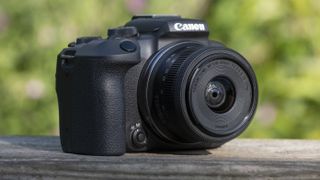
How to choose the best beginner mirrorless camera?
Just because something is 'cheap', that doesn't necessarily mean it represents value for money. If you find you quickly outgrow it and need to upgrade very soon, then you'll end up spending even more money. Some of the cameras here might seem expensive to somebody buying their first camera, but we will have recommended them as something that should last you for many years to come.
If you view your photography hobby as an investment, it will pay huge dividends if you can invest as much as you possibly can when you first get started. Inexpensive cameras can still do a good job, but when cutting back on price inevitably means that features and controls are missing – so ask yourself if the saving is worth missing out on something you think you'll need.
For example, the cheapest mirrorless cameras don’t usually have viewfinders, but these can be invaluable for shooting in bright light, when the screen on the back can easily suffer from glare and reflections, so we’d always recommend stretching to a camera with a viewfinder if you can.
Mirrorless cameras usually ship with either an APS-C or a slightly smaller Micro Four Thirds sensor. Both represent a significant step up in resolution and image quality when compared to the small sensors found in a smartphone or compact camera, and the larger size means they also serve up superior low-light performance.
The importance of other features will depend on your shooting style. Those looking to try out vlogging will welcome the excellent video specs of several cameras above, while in-body image stabilization will be a useful addition for those looking to shoot hand-held.
You might want a camera that can shoot 4K, and not all of them can. Although it's becoming more common, it's still a somewhat new area for entry-level mirrorless cameras, and they don’t all do it (though they do all offer regular 1920 x 1080 Full HD).
Check out the specs of the rear screens, too. The size and resolution are not so important since they’re all quite similar these days, but a touchscreen display will make the camera feel more like a phone, making the transition to using a "proper" camera a little easier since you'll already be used to tapping, swiping and so on.
All the mirrorless cameras we’ve chosen for this list are well suited to beginners because of their price, size, ease of use, features or all of those things. You can also take a look at our other buying guides below if you're still undecided. Otherwise, read on to see the 10 best entry-level mirrorless cameras you can buy right now.
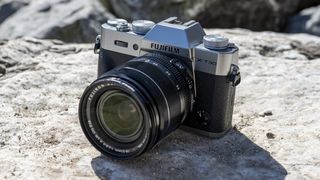
| If you need... | Pick this camera | Launch price |
| The best range of lenses | Fujifilm X-T30 II | $899 / £749 / AU$1,585 |
| The best autofocus system | Canon EOS R10 | $979 / £899 / AU$1,499 |
| The best video features | Sony ZV-E10 | $700 / £680 / AU$1,249 |
| A full-frame camera | Nikon Z5 | $1,699 / £1,719 / AU$3,099 (with kit lens) |
| Classic, retro looks | Nikon Z fc | $959 / £899 / AU$1,499 |
| A small, affordable camera | Panasonic Lumix GX9 | $999 (with kit lens) / £699 / AU$1,399 (with kit lens) |
What camera should a beginner start with?
That really depends on what you'd like to do. An entry-level mirrorless camera is best if you want to up your photography game for social media or if you want to expand your photography skills.
The beauty of most beginner mirrorless cameras is that they come bundled with a ‘kit’ lens to cover the most common shooting scenarios to get you started and give you enough flexibility to experiment with depth of field.
As you progress, you should be able to expand your shooting setup since these camera bodies are compatible with at least one of that manufacturer's family of lenses.
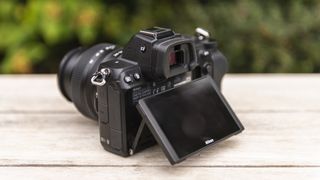
Is DSLR or mirrorless better for entry level photographers?
The answer to whether DSLR or mirrorless cameras are better is the subject of much debate. In fact, we’ve dedicated an in-depth guide to the topic. The question is no less divisive for beginner photographers: both formats have plenty to offer for novices. Which is right for you will often come down to a range of factors, with the final decision usually determined by personal preference.
On paper, mirrorless and DSLR cameras share many of the same benefits for beginners. Both formats give learners the option to change lenses, which means you can upgrade to different glass as your creativity grows. Mirrorless and DSLR cameras also come in a range of sizes and styles, with entry level models to suit different budgets. And the best of both genres can produce fantastic stills.
That said, mirrorless and DSLR cameras also differ in several important ways. The main one is that mirrorless cameras don’t use a mirror to direct light onto their sensor. This means they can usually shoot at faster frame rates, which is useful if you’d like to try action photography. It also means they can be made smaller, which allows learners to carry them more readily.
The best beginner DSLR cameras are renowned for their fantastic handling and manual controls, which make them accessible for novices to operate. Then again, some of the best beginner mirrorless camera options in our list above imitate this DSLR styling with ergonomic grips and dials.
DSLR cameras also benefit from optical viewfinders, which give an analogue view of a given scene – something many beginners find intuitive. Mirrorless cameras generally rely on electronic equivalents, the best of which are sharp and basically lag-free. Touchscreens feature on both formats, streamlining the jump up from a smartphone – although they’re more common on entry level mirrorless models.
How we test beginner mirrorless cameras
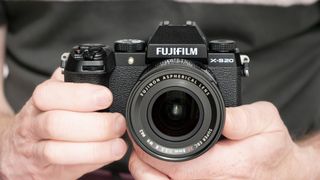
☑️ 100s of cameras reviewed
☑️ 15 years of product testing
☑️ Over 16,000 products reviewed in total
☑️ Nearly 200,000 hours testing tech
Buying a camera these days is a big investment, so every camera in this guide has been tested extensively by us. These days, real-world tests are the most revealing way to understand a camera's performance and character, so we focus heavily on those, along with standardized tests for factors like ISO performance.
To start with, we look at the camera's design, handling and controls to get a sense of what kind of photographer it's aimed at and who would most enjoy shooting with it. When we take it out on a shoot, we'll use it both handheld and on a tripod to get a sense of where its strengths lie, and test its startup speed.
When it comes to performance, we use a formatted UHS-1 card and shoot in both raw and JPEG (if available). For burst shooting tests, we dial in our regular test settings (1/250 sec, ISO 200, continuous AF) and shoot a series of frames in front of a stopwatch to see if it lives up to its claimed speeds. We'll also look at how quickly the buffers clears and repeat the test for both raw and JPEG files.
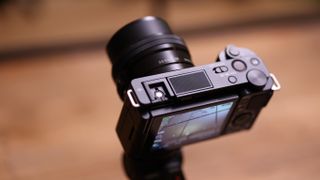
In various lighting conditions, we also test the camera's different autofocus modes (including Face and Eye AF) in single point, area and continuous modes. We also shoot a range of photos of different styles (portrait, landscape, low light, macro/close-up) in raw and JPEG to get a sense of metering and its sensor's ability to handle noise and resolve fine detail.
If the camera's raw files are supported by Adobe Camera Raw, we'll also process some test images to see how we can push areas like shadow recovery. And we'll also test its ISO performance across the whole range to get a sense of the levels we'd be happy to push the camera to.
Battery life is tested in a real-world fashion, as we use the camera over the course of the day with the screen set to the default settings. Once the battery has reached zero, we'll then count the number of shots to see how it compares to the camera's CIPA rating. Finally, we test the camera's video skills by shooting some test footage at different frame-rates and resolutions, along with its companion app.
We then take everything we've learned about the camera and factor in its price to get a sense of the value-for-money it offers, before reaching our final verdict.
Get the best Black Friday deals direct to your inbox, plus news, reviews, and more.
Sign up to be the first to know about unmissable Black Friday deals on top tech, plus get all your favorite TechRadar content.

Tim is the Cameras editor at TechRadar. He has enjoyed more than 15 years in the photo video industry with most of those in the world of tech journalism. During his time as Deputy Technical Editor with Amateur Photographer, as a freelancer and consequently editor at Tech Radar, Tim has developed a deeply technical knowledge and practical experience with cameras, educating others through news, reviews and features. He’s also worked in video production for Studio 44 with clients including Canon, and volunteers his spare time to consult a non-profit, diverse stories team based in Nairobi. Tim is curious, a keen creative, avid footballer and runner, and moderate flat white drinker who has lived in Kenya and believes we have much to enjoy and learn from each other.
- Mark WilsonSenior news editor
- Michelle Rae UyContributor
- Chris Rowlands